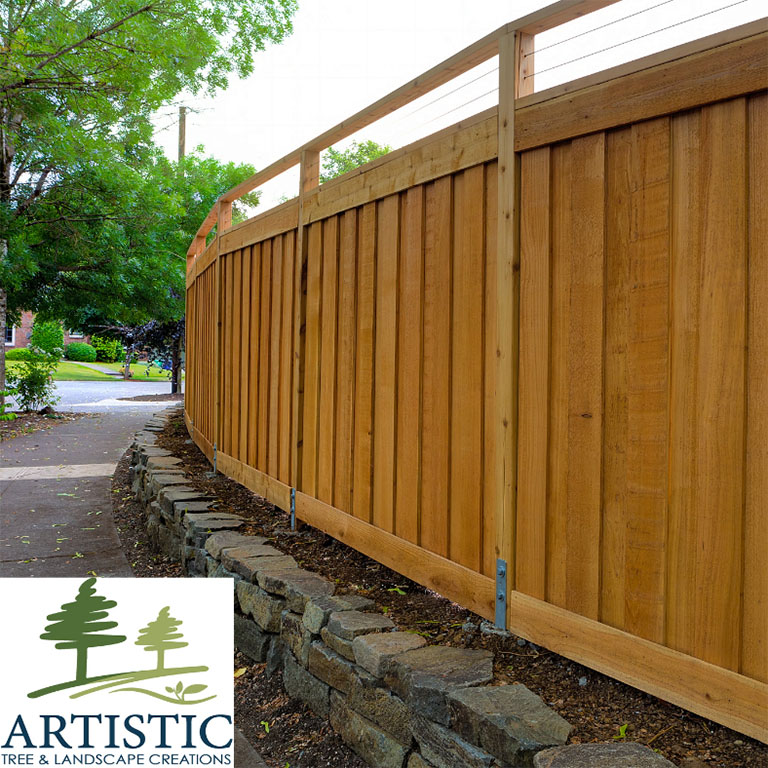All Categories
Featured

A fencing acts as even more than simply a limit; it gives privacy, security, and enhances the aesthetic allure of your home. However, like any type of exterior structure, a fencing will inevitably deal with deterioration from the components and age. While routine maintenance can expand the life of your fencing, there comes a time when repairs no more suffice, and it's time to think about substitute. Just how do you understand when your fencing is beyond conserving? Below are some crucial indicators that your fencing may need to be changed.
- Noticeable Damages or Wear. Among the most obvious indicators that your fencing is nearing completion of its life expectancy is noticeable damages. This might consist of fractures, divides, warping, or broken areas. Wood fences are especially vulnerable to splitting or splintering over time, while vinyl fencings can develop splits. Steel fencings, like chain-link or wrought iron, can likewise come to be harmed with rust or curved blog posts. If the damage is prevalent or architectural, fixing private sections may not be sufficient, and changing the fence becomes necessary.
- Rot and Degeneration. If you discover that parts of your fence feel soft to the touch or if you see mold and mildew or fungi expanding, it's an indication of rot. Minor rot can often be fixed, comprehensive degeneration, especially near the base of fence articles, can jeopardize the integrity of the entire fence.
- Leaning or Tilting. A leaning fence is a clear indication that something is incorrect with its structural assistance. Over time, blog posts might shift as a result of soil erosion, water damage, and even root growth from nearby plants. While minor tilting can sometimes be remedied by correcting the alignment of the blog posts and securing them, comprehensive leaning usually shows that the articles have actually been harmed beyond repair. If the fencing continues to lean in spite of efforts at modification, it may be time to change the afflicted areas or the whole fencing.
- Corrosion or Deterioration (For Metal Fencings) If you have a steel fence, especially one constructed from wrought iron or deterioration, steel or corrosion can damage its framework. While small rust can typically be removed and treated, extensive rust that compromises the fence's stability is an indicator that replacement is needed. It can make the fence unsightly or harmful if the rust has spread dramatically or weakened the steel. It's far better to replace a greatly rusted steel fence than to continue attempting fixings.
- Parasite Infestations. Wood fences are a typical target for bugs like termites, carpenter ants, and rodents. These insects can trigger comprehensive damages by tunneling into the timber and compromising its framework. If you observe small openings, sawdust heaps, or actual bugs residing in your fencing, it's crucial to deal with the problem right away. In instances where the damages is extreme, the damaged fencing blog posts or boards might need to be changed to recover the fence's stability.
- Difficulty Maintaining the Fencing. If you locate yourself continuously making fixings to the very same locations of your fence, it could be an indication that the fencing is past its prime. If you're spending even more cash on patching up old areas than you would on a total replacement, it's time to think about changing the fence altogether.
- Age of the Fence. The age of your fence plays a considerable function in its total problem. While the life-span of a fencing can differ relying on the weather condition, place, and material conditions, a lot of fencings last between 15 and twenty years. It might be time to change it if your fencing is coming close to or surpassing its anticipated life-span and showing indications of wear and tear. Despite normal upkeep, an aging fence will at some point need to be changed to keep its performance and look.
- Out-of-date Appearance. In some cases, a fence merely comes to be obsolete, no much longer matching the design or needs of your property. If your fence no much longer matches your residential or commercial property or meets your demands-- such as privacy, protection, or appearances-- it may be time to consider a substitute.
- Fencing No More Serves Its Purpose. Your requirements for a fencing can advance with time. If your original fencing was made for decoration or to maintain family pets had, yet currently you require extra personal privacy or protection, a replacement could be essential. A fence that no more offers its desired function is not just much less reliable yet can also interfere with the total value of your residential property. In such instances, replacing the fencing with one that fulfills your current needs is the best choice.

Conclusion. If you see any of the indicators provided above-- noticeable damage, rot, leaning, pest infestations, or an outdated appearance-- it might be time to replace your fence. Replacing an old, worn-out fencing can boost the general value of your building, boost safety and security, and offer your backyard a fresh appearance.
Latest Posts
The Convenience and Efficiency of Billing Your EV
Published Apr 19, 25
1 min read
Decorative Iron Fence: Style and Stamina
Published Apr 19, 25
2 min read
NAPA AutoCare: Professional Repairs Backed by the NAPA Network
Published Apr 19, 25
2 min read